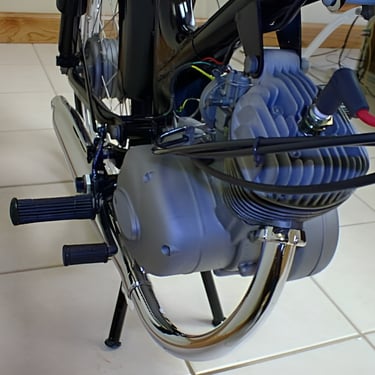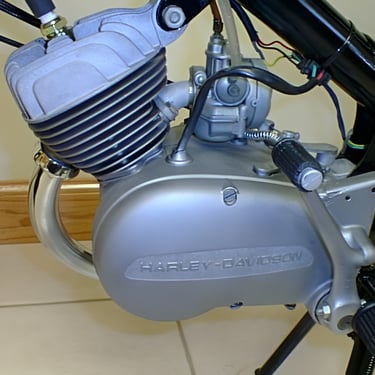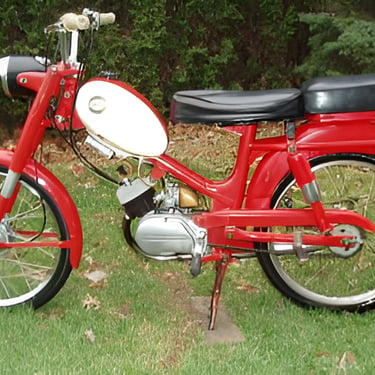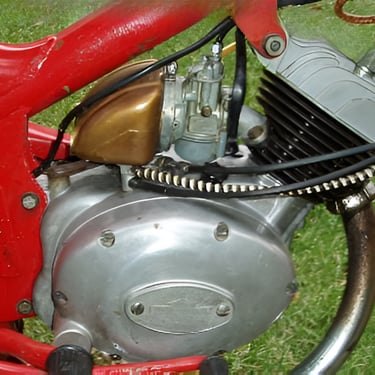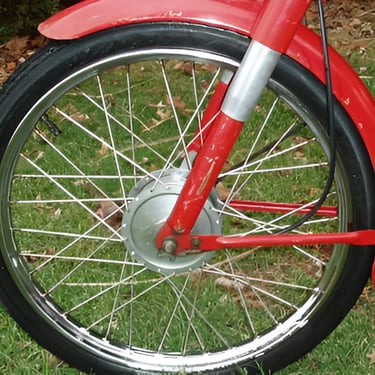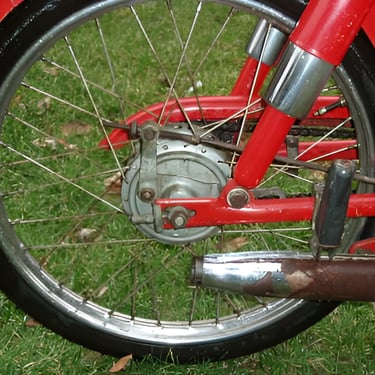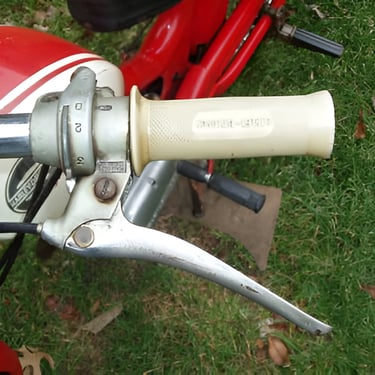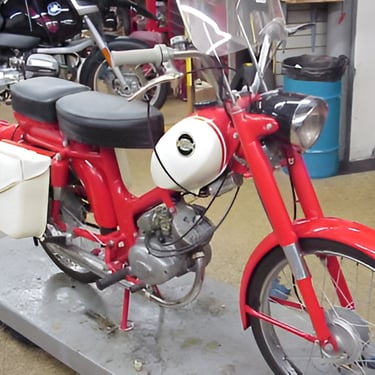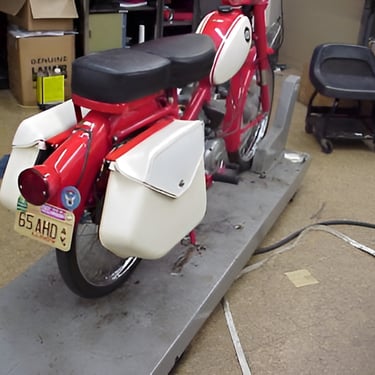The Harley-Davidson M50 Moped: Who Knew Harley Made Mopeds?
The article explores the history of Harley-Davidson's venture into the moped segment with the launch of the M50 in the 1960s. Crafted in Italy at the Aermacchi plant, the M50 was a unique experiment that combined Italian design flair with an American marquee. The article delves into the design aspects, technicalities, and market impact of the M50, which was a product ahead of its time.
MOTORCYCLES VINTAGE MOPEDSHARLEY-DAVIDSON TWO STROKE1960'SUNITED STATES ITALY
11/3/20233 min read
The Story of Harley-Davidson M50 Moped: A Unique Chapter in Harley's History
Introduction
Harley-Davidson, an iconic American heavyweight motorcycle manufacturer, launched into a new segment in the 1960s - mopeds. The significant departure came in the form of the M50, a tiny but robust two-wheeler that shook up the market and added a new dimension to the brand. This article fuels the journey into the intriguing world of the M50 and its larger family, exploring its creation, design aspects, market impact, and cultural significance in the scope of moped and Harley-Davidson history.
Historical Overview of Harley-Davidson
Established in 1903 in Milwaukee, Wisconsin, Harley-Davidson quickly built a reputation for producing heavyweight motorcycles equipped with V-Twin engines. Harley-Davidson weathered numerous socio-economic upheavals, including the Great Depression, gaining a loyal following that savored its signature style, performance, and unmistakable road presence. This initial success set a robust foundation, securing Harley-Davidson's place as a leading motorcycle manufacturer.
However, the historical journey took an intriguing turn in the 1960s when Harley-Davidson introduced the M50 moped. This venture was born out of a strategic investment in the Italian motorcycle-maker Aermacchi, which would open a new chapter in Harley-Davidson's two-wheeled saga.
The Curious Case of the M50 Moped: Introduction and Key Features
The M50 marked Harley-Davidson's foray into the moped segment- a drastic move away from their traditional lineup of hefty cruisers. Crafted in Italy at the Aermacchi plant, the M50 was an audacious experiment that married Italian design flair with an American marquee. Its sporty two-stroke engine and innovative 3-gear rotating handlebar shift mechanism set it apart, characterizing the tiny yet powerful moped that defied Harley-Davidson’s traditional image.
M50 Design and Technicalities
The M50 carried a visibly Italian design, with an organic-shaped gas tank and a long, racy seat. Unique gear change mechanism built into the handlebars, a feature rarely seen in American motorcycles, added to its exotica. However, its hallmark was its two-stroke engine design, a field in which Aermacchi stood out even in Italy, notorious for its four-stroke motorbikes. Despite a swerve from conventional Harley models, the M50 incorporated some American design influences, such as a higher handlebar typical among Italian fifties.
Harley and Aermacchi: The Tactical Merger
Harley-Davidson's venture into the lightweight two-stroke motorcycle category traces its roots back to 1960, when it purchased strategic shares in the Italian lightweight motorcycle manufacturer Aeronatica-Macchi to form Aermacchi Harley-Davidson. The descriptor 'lightweight' is crucial here because Harley was primarily known for its heavyweight motorcycles. The collaboration aimed to create small, affordable bikes for the American market to counter Japan's burgeoning hold over the young, learner-friendly motorcycle segment. The product of this cooperation encapsulates the M50 moped, among others.
Market Reception and Legacy
The remarkably low price of $275 made the M50 affordable to a wide spectrum of consumers. However, the M50 did face some criticism, especially from hardcore Harley-Davidson fans who found Aermacchi's input disrespectful to Harley's iconic V-twins. Nonetheless, it also garnered appreciation for introducing the Harley-Davidson brand to a new set of audiences, including younger riders and those who preferred smaller, more manageable motorcycles. Considered controversial, even today, the Aermacchi Harley-Davidson partnership has left an indelible impact on the history of the American company. Outside the core of Harley-Davidson is a subculture of collectors and enthusiasts who appreciate the Aermacchi Harley-Davidson era, particularly the distinctive M50 moped.
A Collector's Favourite
While the Harley-Davidson M50 may not have been fully embraced by the broader motorcycling community, it caught the attention of niche enthusiasts and collectors over the years. It began to represent a unique chapter in the brand's history. M50 instances in good condition became prized items in collector's showcases due to their atypical Harley make and unique Aermacchi design features. The Aermacchi Harley-Davidson collaboration may have faced some criticism, but the M50 lived on, validating the brand's successful venture into the uncharted moped territory.
Comparison to Traditional Motorcycles
When compared to a typical Harley-Davidson motorcycle, the M50 was a stark contrast. It lacked the bulk and muscularity of a cruiser and instead sported a smaller stature characteristic of Italian two-wheelers. But despite its petite appearance, the M50 did not compromise on the brand's renowned road presence. Its striking design and distinctive features made it a sight to behold, even among larger Harley siblings.
Conclusion
A daring departure from tradition, the Harley-Davidson M50 was, without a doubt, a product ahead of its time. It broadened the scope of the Harley-Davidson lineup while providing the market with a genuinely unique offering. Despite the controversy surrounding the Aermacchi collaboration, it invigorated Harley-Davidson's range, introducing newfound versatility and opening the door to a new kind of audience. As such, the M50 will always be remembered as a fascinating imprint in the annals of Harley-Davidson's storied journey.


